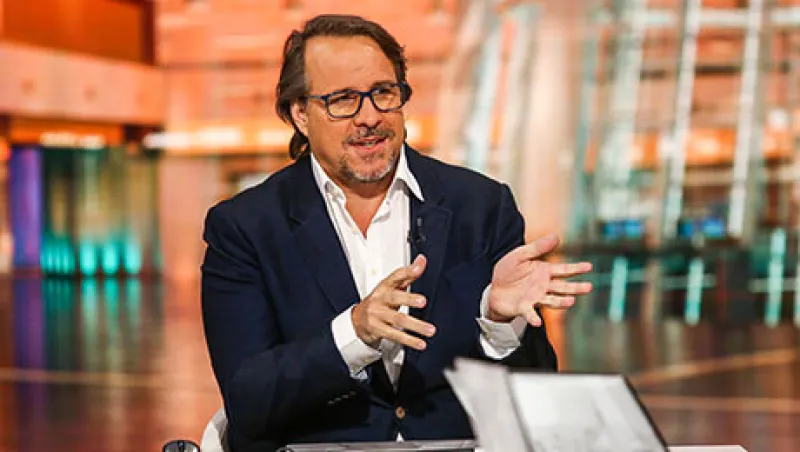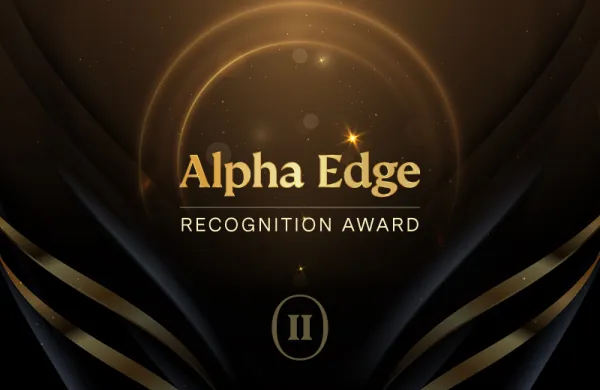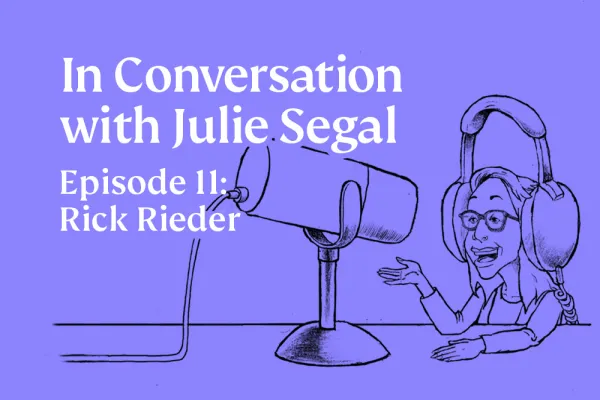Print media is dying — or so goes the refrain — but tech entrepreneur and private equity investor Michael Ferro believes he can save it. In February, Ferro, founder of Chicago-based Merrick Ventures, became the largest shareholder in Chicago-based Tribune Publishing Co., which publishes the Chicago Tribune, the Chicago Sun-Times, the Los Angeles Times and a portfolio of smaller papers. Tribune, like all traditional news publishing companies, is facing tough times. With shrinking advertising and circulation revenues, its stock price dropped 60 percent in the year prior to Ferro’s $44.4 million cash infusion. But when Tysons Corner, Virginia–based rival Gannett Co. offered to buy Tribune in April for $12.25 a share, a 63 percent premium over its price at the time — plus the assumption of another $390 million in debt —Tribune’s board, including nonexecutive chairman Ferro, decided to pitch shareholders a sweeping digital overhaul instead. The plan is reminiscent of what many old-media companies have tried to do in recent years, but some shareholders and analysts aren’t sure Ferro and his team are up to the task.
“Ferro believes he’s inventing something for the newspaper industry,” says Ken Doctor, a consumer media expert who spent more than 20 years in both editorial and executive positions at newspaper publisher Knight Ridder before its 2006 sale to McClatchy Co. “He truly believes that. Nobody else believes it.”
Although Tribune’s top brass have publicly supported Ferro’s new plan for the company, Doctor is far from the only observer to question recent actions. It’s common for major shareholders to reject takeover bids, especially when they are unsolicited or hostile, often to push for a higher price. But with Gannett’s offer, analysts and at least one major shareholder — Los Angeles–based alternative asset firm Oaktree Capital Management — are scratching their heads and wondering what more Tribune could want. On Friday, Oaktree, which has been quiet amid previous unsolicited bids for Tribune, issued a formal statement with the Securities and Exchange Commission urging the company to hear Gannett out.
“The institutional investors are seeing this offer for what it is: their best chance to get double digits for that share price that they are probably ever going to see,” says Doctor.
Ferro and recently appointed CEO Justin Dearborn laid out Tribune’s new strategic plan, which involves selling content from newspapers and syndicated brands through new digital avenues and creating new international bureaus of the Los Angeles Times for more global entertainment coverage. If this sounds familiar, it’s because similar things have been tried before, by everyone from Amazon.com founder Jeff Bezos (with the Washington Post) to New York–based hedge fund firm Alden Global Capital (with Digital First Media).
So far, monetizing old media has proved difficult even for the savviest entrepreneurs, while new media companies such as BuzzFeed and Fusion Media Network are still grappling with turning views and clicks into dollars. Ferro’s most recent deal before buying into Tribune was the $1 billion sale of health care IT company Merge Healthcare, of which his Merrick Ventures owned 24 percent, to IBM last summer, and he aims to assemble a team at Tribune with equally impressive venture and technology chops. But some experts see hubris in attempting to apply those skills to an industry in secular decline.
The drama over Tribune reached a crescendo on Monday when the company adopted a so-called poison pill plan that would allow shareholders to buy stock at a significant discount in the event of a sale, diluting the potential buyer’s stake. The situation is emblematic of a question that every print news outlet has been grappling with since the advent of the Internet, and arguably before: How does a publisher produce well-crafted, engaging content that also brings in enough revenue to pay the people producing that content and also keep the lights on? Though the technology-focused disrupters often seem to win the battle for clicks, the question of monetizing content keeps publishers of all types up at night. If there’s something to be tried, the Old Guard has tried it, at least to the extent that they can afford to do so. And when innovation hasn’t worked — as it often hasn’t — the next logical step has been either bankruptcy or M&A.
“News is so competitive on the Internet, and barriers to entry to the market are so low, that newspaper groups are finding it far harder to make money than they had anticipated at the start of their digital transformations,” says Lorna Tilbian, executive director and head of the media sector at London-based institutional stockbroker Numis Securities. “Publishers are being forced to find ways to make print profitable, which invariably means cutting costs and, increasingly, consolidation.”
Tilbian points to Trinity Mirror’s 2015 purchase of Local World in the U.K. as one such example. Gannett itself has been on a buying spree, most recently acquiring Milwaukee-based local paper publisher Journal Media Group for $280 million in April.
In this environment, it’s hard for many in the industry to see what Ferro and his team have figured out that so many others haven’t. Even Matthew Brooks, a services sector analyst at Macquarie Capital (USA), who urged Tribune to become the “Netflix of news” by selling its print products and buying tablets for each subscriber instead, isn’t sold on the new digital direction.
“I think what they’re doing is actually a pretty good strategy compared to that of the last team — they have expertise in software, data analysis and artificial intelligence,” Brooks says. “But we don’t know how fast they can grow that business. Print ads are still going to go down 8 to 10 percent a year, and that’s not going to stop. Can they grow the rest of the business and make the market value that?”
Though Brooks’s official position on the ongoing deal is neutral, he says the risk of the answer to that question being no is too high to ignore Gannett. If the deal is lost, Tribune may spread more poison than it bargained for; Brooks predicts a share price of $9 or less. (Tribune shares closed at $11.50 on May 9.)
The real test may come at Tribune’s June 2 annual meeting. There are two board seats up for grabs, and Gannett has encouraged shareholders to withhold their board votes to pressure the company to consider its deal. Should Ferro succeed in placing his picks in those seats, he may have enough support to prevent a sale, but Doctor notes one major potential drawback: the prospect of one or more shareholder lawsuits, which are common even with the friendliest of deals and can cause additional strain on already struggling companies.
“Gannett looks pretty serious about this, and I think Oaktree and others are going to be serious about it,” says Doctor. “Ultimately, I think [Ferro] gets outvoted out of fear, if nothing else.”






